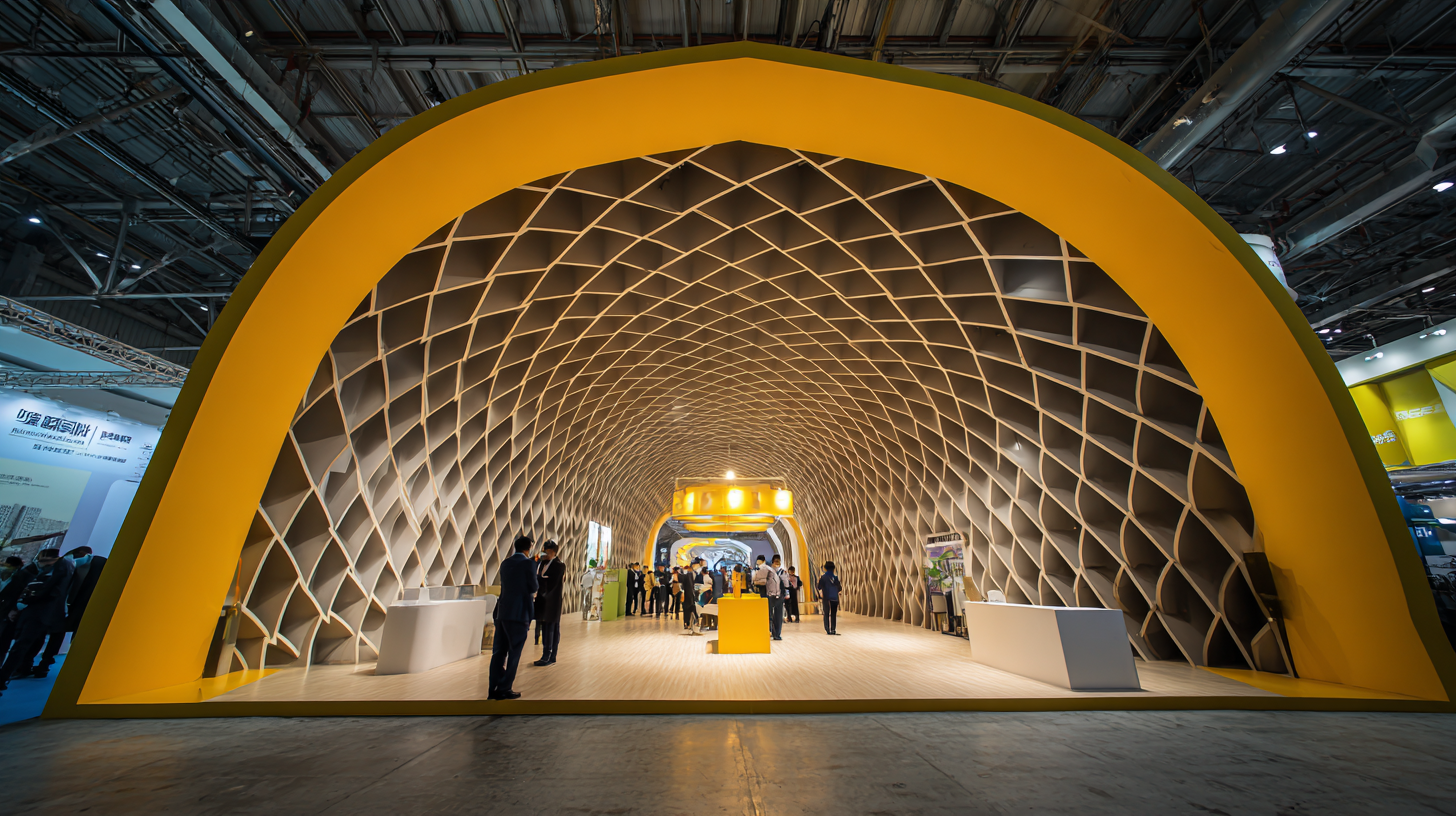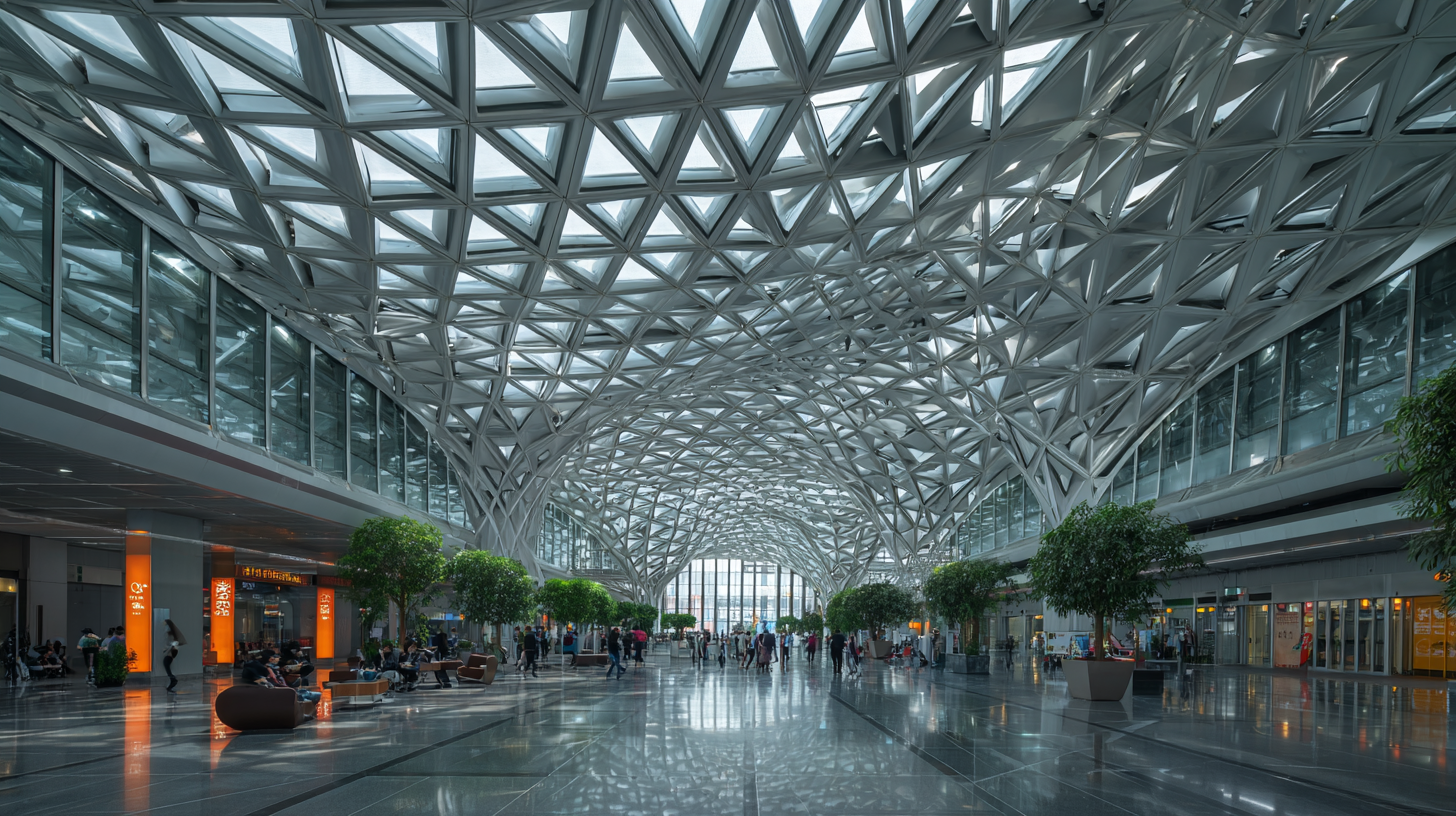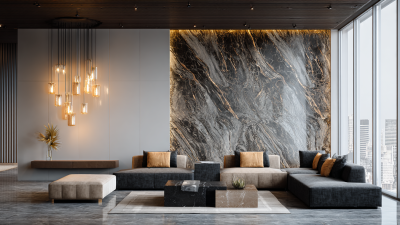
- Ginazhao@wanglumaterial.com
- Mon - Sat at 7:00AM to 9:00PM



As the 138th Canton Fair approaches in 2025, the spotlight shines on the innovative developments in the realm of Sound Absorbing Panels, a crucial element in enhancing acoustic environments across various sectors.
According to the research firm MarketsandMarkets, the global sound absorption materials market is projected to reach USD 19.4 billion by 2026, growing at a CAGR of 5.2% from 2021. This trend highlights the increasing demand for effective sound management solutions in both residential and commercial spaces.
 The Canton Fair provides an ideal platform for manufacturers and suppliers to showcase cutting-edge designs and sustainable materials that comply with the latest industry standards. It also serves as an opportunity for experts and stakeholders to engage in meaningful discussions about advancements in sound absorbing technologies that promise to reshape the acoustic landscape of tomorrow.
The Canton Fair provides an ideal platform for manufacturers and suppliers to showcase cutting-edge designs and sustainable materials that comply with the latest industry standards. It also serves as an opportunity for experts and stakeholders to engage in meaningful discussions about advancements in sound absorbing technologies that promise to reshape the acoustic landscape of tomorrow.
In contemporary architecture, the significance of sound absorbing panels cannot be overstated. These panels are essential in enhancing the acoustic quality of spaces, particularly in bustling urban environments where noise pollution is prevalent. According to the Acoustical Society of America, effective sound absorption can reduce noise levels by up to 30 decibels, thereby creating more comfortable living and working conditions. As architects and designers prioritize the well-being of occupants, integrating sound absorbing materials into building designs is increasingly viewed as a standard practice rather than an afterthought.
Tips: When selecting sound absorbing panels, consider materials that are not only effective but also aesthetically pleasing. Many modern options now blend functionality with design, allowing for creative integration into spaces. Additionally, pay attention to the NRC (Noise Reduction Coefficient) rating; panels with a higher NRC value indicate better sound absorption capabilities, further enhancing the acoustic performance of your environment.
As we approach the 138th Canton Fair in 2025, it's clear these innovations in sound absorbing panels will take center stage. The fair will showcase the latest technological advancements and materials in this field, providing invaluable resources for industry professionals. By understanding the role of these panels in modern architecture, stakeholders can contribute to more sustainable and livable urban spaces.
This chart illustrates the distribution of sound-absorbing panel usage in various architectural applications based on recent surveys.
The future of sound-absorbing panels is set to undergo significant transformation, particularly highlighted at the upcoming
138th Canton Fair in 2025. Emerging trends in sound absorption materials showcase a shift towards
innovative and efficient solutions such as acoustic metastructures and advanced nanomaterials. As the industrial noise control market continues to evolve, it's estimated to reach a solid market size driven by the increasing demand across various applications.
Reports indicate that products like flexible and rigid sound-absorbing panels are expected to dominate the market, addressing internal noise control in residential and commercial spaces.
Recent advancements in nanoscience demonstrate that nanoscale materials can achieve remarkable sound absorption properties, significantly outperforming conventional materials. The integration of metamaterials in sound absorption not only provides enhanced performance but also opens avenues for unique design strategies in product development.
As companies seek to innovate, the focus on creating lightweight yet effective sound solutions is paramount.

Tip: When considering sound-absorbing panel projects, explore options that incorporate both traditional materials and emerging nanotech solutions to enhance acoustic performance while maintaining aesthetic appeal. Additionally, staying informed about the latest industry reports can help you make data-driven decisions for your sound control needs.
The market for soundproof solutions is poised for significant growth by 2025, driven by increased awareness of the importance of noise control in various environments. According to the latest market research published by Custom Market Insights, the global acoustic ceiling tiles market is projected to reach a substantial size of USD 11.53 billion by 2033, expanding at a compound annual growth rate (CAGR) of 5.21%. This trend is reflective of the rising demand for effective sound-absorbing materials across diverse sectors, including residential, commercial, and industrial applications.

In addition, the acoustic panel market is estimated to experience considerable growth, with a projected value of USD 24.2 billion by 2034, implying a robust CAGR of 7.2%. The increasing investments in construction and renovation projects, where noise reduction is a priority, are expected to propel the demand for acoustic panels. As businesses and homeowners alike recognize the benefits of soundproofing technologies in enhancing comfort and productivity, the adoption of noise control systems is set to gain momentum, offering promising opportunities for manufacturers and suppliers in this evolving landscape.
As we look forward to the 138th Canton Fair in 2025, the focus on sustainability within the sound absorbing panel industry has never been more pronounced. Eco-friendly innovations are reshaping how these panels are manufactured and utilized. Designers and manufacturers are increasingly incorporating recycled materials and sustainable production methods, reducing environmental impact while enhancing acoustic performance. This trend not only meets growing consumer demand for greener products but also aligns with global initiatives aimed at reducing carbon footprints across industries.
Moreover, the integration of advanced technologies in the development of sound absorbing panels is paving the way for smarter, more effective solutions. Innovations such as biomimicry and the use of natural fibers are being explored, allowing manufacturers to create aesthetically pleasing yet highly functional products. This commitment to sustainability not only enhances the market appeal but also offers a unique selling proposition in a competitive landscape. As visitors gather to explore these advancements at the Canton Fair, the emphasis on eco-friendly sound absorbing panels reinforces a broader commitment to fostering a sustainable future.
| Panel Type | Material | NRC Rating | Recycled Content (%) | Certifications |
|---|---|---|---|---|
| Acoustic Foam Panels | Polyurethane | 0.85 | 30% | GREENGUARD |
| Fabric Wrapped Panels | Recycled Polyester | 0.95 | 50% | LEED |
| Wood Wool Panels | Natural Wood Fiber | 0.80 | 40% | FSC |
| Mineral Fiber Panels | Cementitious Material | 0.70 | 20% | ISO 14001 |
| Bamboo Panels | Bamboo | 0.90 | 100% | PEFC |
The 138th Canton Fair in 2025 promises to showcase innovative sound-absorbing panels, with a focus on their successful implementation in commercial spaces.
According to a report by the Acoustical Society of America, poor acoustic environments in commercial settings can lead to decreased productivity, with employees losing up to 30% of their focus due to excessive noise. This highlights the necessity for effective sound management solutions in office designs and other public spaces.
Case studies from various commercial developments demonstrate the positive impact of sound-absorbing panels. For instance, a study conducted in a bustling open office in San Francisco showed that integrating acoustic panels decreased ambient noise levels by 50%, resulting in a remarkable 20% increase in employee satisfaction and performance. Furthermore, in retail environments, sound panels not only enhance the shopping experience by minimizing disruptive noise but also contribute to aesthetic designs, as highlighted by recent findings from the International Design Association, revealing that 75% of customers prefer shopping in acoustically optimized spaces. Implementing sound-absorbing technology is not just about compliance but also about enhancing the overall experience for both employees and customers.





